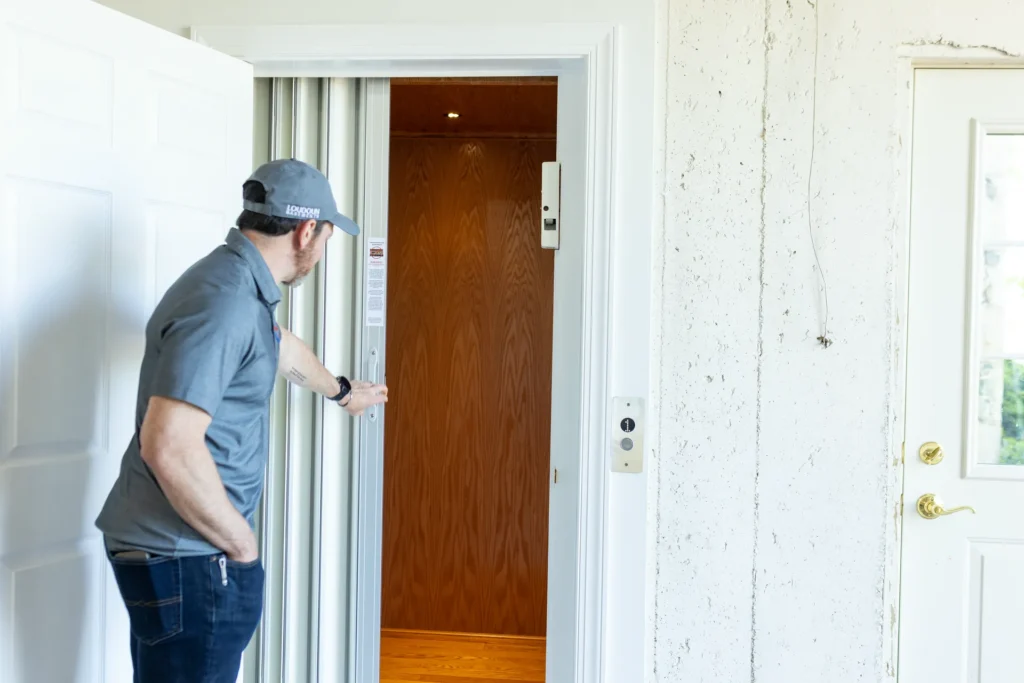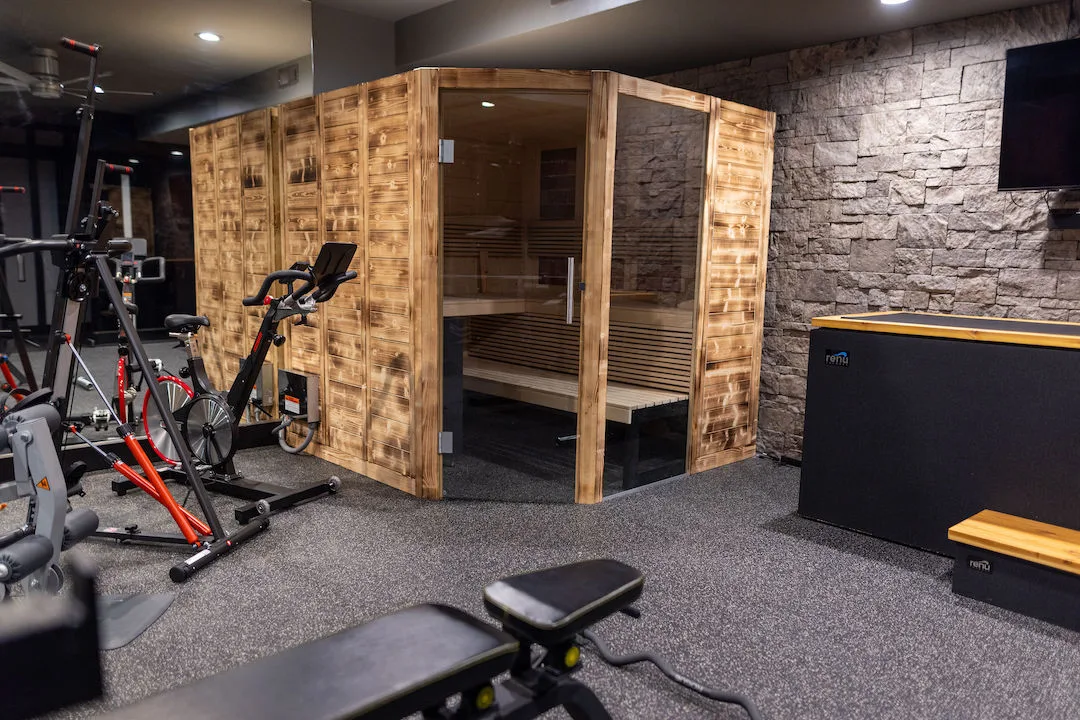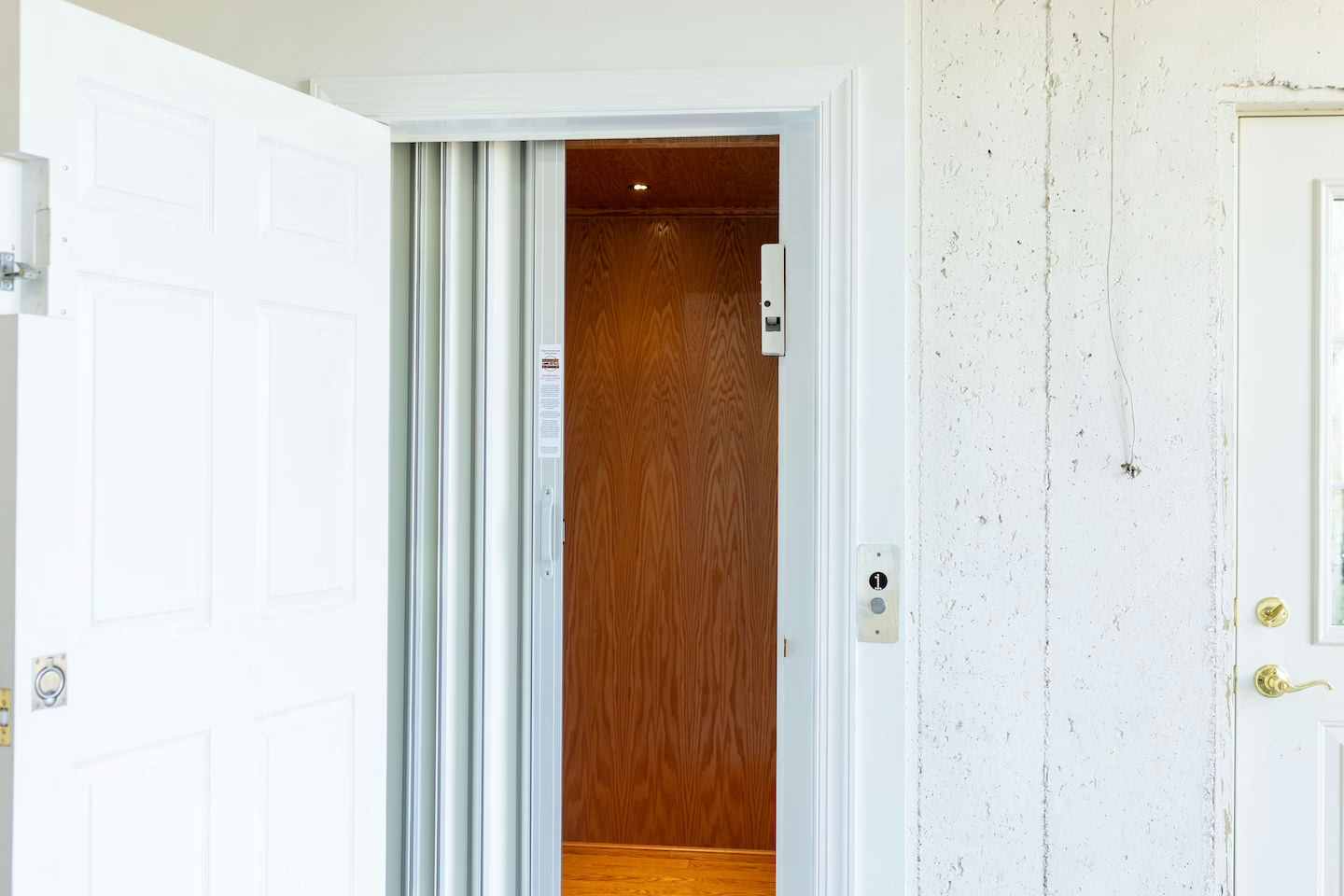Choosing the Best Home Elevator: A Comprehensive Guide
Remember when home elevators were just for the ultra-wealthy? Those days are long gone. Today, home elevators have become practical solutions for many homeowners looking to improve accessibility, add convenience, or increase their property value. If you’re considering adding an elevator to your home, whether for aging in place or simply to make daily life easier, you’ve got plenty of options to explore.
Table of Contents
Understanding Home Elevator Basics
Let’s talk about size first—because in home design, space matters. Most standard residential elevators take up about 20-25 square feet of floor space, with a typical cab measuring around 36 inches wide by 48 inches deep. That’s enough room for a couple of people or someone with a small mobility device.
But what if you need something wheelchair-accessible? In that case, you’ll want to look at ADA-compliant dimensions, which require more generous measurements: at least 51 inches deep, 68 inches wide, and door openings of at least 36 inches. These dimensions ensure comfortable access for wheelchair users.
For homes where space is at a premium, there are some clever space-saving options. Pneumatic elevators use air pressure technology and can be as small as 30 inches in exterior diameter. Through-floor elevators like the Stiltz models need just 8.5 square feet—perfect for tighter spaces where a traditional elevator simply won’t fit.
When it comes to how far your elevator can travel, most standard residential models can handle up to 50 feet of vertical distance with 4-6 stops along the way. Weight capacities vary widely too, from around 375 pounds for the most compact units to 950 pounds for heavy-duty models designed for wheelchair access or multiple passengers.
Exploring Your Options for the Best Home Elevator
Home elevators aren’t one-size-fits-all—there’s a surprising variety of types to choose from, each with its own advantages.
Traditional Shaft Elevators
Traditional elevators with shafts remain popular for many homes. If you’re looking for smooth, quiet operation and higher weight capacity, a hydraulic elevator might be your best bet. These use a fluid-based piston system but do require a small pit (typically about 8 inches deep) and a separate machine room. While they’re on the pricier side, the ride quality is superior to many alternatives.
The best home elevator for energy-efficiency with smooth starting and stopping is a traction or cable-driven elevator. These operate using cables and counterweights, similar to commercial elevators but scaled down for residential use. They do need some overhead space for the mechanical components, but many homeowners appreciate their reliable performance.
Looking to save space? Machine room-less (MRL) elevators house all their components within the hoistway itself, eliminating the need for a separate equipment room. They’re more affordable than traditional hydraulic systems and require less extensive construction, making them increasingly popular for modern homes.
Space-Saving Solutions
For the ultimate in space efficiency, shaftless and limited-shaft options offer the best home elevator solutions. Pneumatic vacuum elevators are perhaps the most striking, with their clear polycarbonate walls creating a futuristic look. They operate using air pressure differentials, require no pit, and can be installed with minimal disruption to your home’s existing structure.
Through-floor elevators, like those from Stiltz, travel directly through a single-floor opening. They’re self-supporting with dual rail technology, plug into standard electrical outlets, and can often be installed in just a day or two. Their small footprint makes them perfect for retrofitting into existing homes where space is limited.
Specialty Applications
For buildings that fall somewhere between residential and commercial, Limited Use Limited Application (LULA elevators) provide a middle ground. They’re designed for low-rise, limited-use applications with a maximum travel distance of about 25 feet (though this can extend to 40 feet with approval in some cases). A LULA elevator is often considered one of the best home elevator options for schools, churches, or mixed-use residential structures that need reliable accessibility.
The Professional Team You’ll Need
The best home elevator project depends largely on the expertise of two key professionals: an architect and a specialized contractor.
Why do you need an architect? A licensed architect brings crucial expertise to your elevator project, ensuring your design meets all local building codes while integrating seamlessly with your home. They’ll evaluate your home’s structure to determine which modifications are needed to support an elevator system and create detailed plans that optimize placement while minimizing disruption to your existing layout.
The relationship between your architect and contractor is vital to your project’s success. Bring both professionals into the planning process early, establish clear communication channels, and ensure they understand who’s responsible for which aspects of permitting and inspection. Some companies even offer integrated design-build services for elevators, which can streamline the process considerably.
Navigating Permits and Regulations
Before any installation work begins, you’ll need to navigate the permitting process. Most residential elevator projects require multiple permits: a building permit for structural modifications, an electrical permit for power systems, and often an elevator-specific permit. Depending on your location and the scope of work, you might also need zoning permits, particularly if you’re adding an exterior elevator.
Elevator installations are governed by several key regulations. The primary one is ASME A17.1/CSA B44, the Safety Code for Elevators and Escalators, which sets standards for design, construction, and operation. Your installation will also need to comply with the National Electrical Code and local building regulations. While private homes are exempt from ADA requirements, these standards still provide valuable guidance for accessibility.
The inspection process typically involves several stages: a pre-installation structural assessment, a rough-in inspection before walls are closed, and a final inspection to verify the completed installation meets all code requirements. Some jurisdictions also require annual safety inspections for ongoing operation, so factor this into your long-term planning.
Finding the Perfect Location
Where is the best home elevator placement? This decision depends on several factors: structural support availability, space constraints, the need for a clear vertical path between floors, and adequate electrical capacity. Your architect can help assess these factors to identify the optimal location.
Many homeowners opt to utilize existing spaces in creative ways. A popular option for discreet installations is the closet-to-closet approach, placing the elevator between vertically aligned closets on different floors. Corner placements can make efficient use of often underutilized space, while thru-car designs (allowing entry from one side and exit from the other) are ideal for wheelchair accessibility.
The timing of your elevator installation makes a significant difference in the approach. If you’re building a new home, you have the advantage of integrating the elevator seamlessly into the design from the beginning. This allows for the best home elevator placement, lower overall costs, and perfect integration with your home’s architecture.
Retrofitting an elevator into an existing home presents more challenges but is absolutely doable with the right team. You’ll likely need some structural modifications—possibly including utility relocation for plumbing, electrical, and HVAC systems that might be in the way. Floor alignment can be tricky in older homes, and space constraints might limit your options. Experienced professionals will find creative solutions for even the most challenging spaces.

Understanding the Complete Cost Picture
Let’s talk numbers, because budgeting for a home elevator involves more than just the price tag on the unit itself. Most homeowners are surprised to learn that the elevator represents only about half of their total investment.
Equipment and Installation Costs
The elevator unit and basic installation typically runs $30,000-$60,000, but that’s just the beginning. The real expense often comes from preparing your home to receive it.
Construction and Modification Expenses
Construction modifications can add another $15,000-$40,000 to your project, depending on what your house needs. This might include structural reinforcement, electrical upgrades, utility relocations when pipes or ducts are in the way, plus all the finishing work like flooring repairs, drywall, and painting to make everything look seamless again.
Hidden Costs to Consider
Don’t forget about permits and inspections either—these administrative costs typically add $1,000-$3,000 to your budget. When you add it all up, most homeowners invest somewhere between $50,000-$100,000 for a complete elevator installation, with luxury installations potentially climbing higher.
Here’s something important to keep in mind: retrofitting an existing home almost always costs more than including an elevator in new construction. That’s because existing homes require creative solutions and often more extensive modifications to accommodate the new system.
Project Timeline Expectations
Timing is everything when it comes to elevator installations, and understanding realistic timelines helps you plan your life around the disruption. The good news? Many elevator installations are faster than you might expect, especially once the preparation work is done.
If you’re going with a through-floor elevator, you’re looking at just 1-3 days for the actual installation once your space is ready. Pneumatic elevators are similarly quick, typically taking 1-2 days with minimal construction mess since they require less structural preparation.
Traditional shaft elevators involve more extensive work. Plan on 2-4 weeks for all the construction modifications—things like building the shaft, preparing electrical systems, and handling any structural reinforcement. Once that’s complete, the actual elevator installation usually takes just 2-3 days.
For hydraulic or traction elevators, you’re looking at the longest timeline: 3-6 weeks total. This includes everything from digging the pit and setting up the machine room to the final installation and testing.
Whatever type you choose, add 2-4 weeks upfront for the planning phase—architectural drawings, permit applications, and contractor selection. The permit approval process often runs concurrently with planning, but it’s wise to factor in potential delays.
Most experienced contractors will give you a realistic timeline upfront and keep you informed about any adjustments along the way. Weather, permit delays, or unexpected structural discoveries can affect schedules, so build in a little flexibility for your peace of mind.
Ongoing Maintenance and Care
Here’s something many homeowners don’t fully consider upfront: elevators are mechanical systems that need regular attention to stay safe and reliable. Think of it like your car—regular elevator maintenance prevents bigger problems down the road.
Most areas require annual inspections by certified technicians, which typically cost $200-$400. These aren’t just bureaucratic requirements; they’re thorough safety checks that examine everything from door mechanisms to emergency systems. Beyond the required inspections, you’ll want professional elevator maintenance visits every 3-6 months, usually running $150-$300 per visit. These service calls include lubrication, adjustments, and catching small issues before they become expensive problems.
Many homeowners find that annual elevator maintenance contracts make financial sense, especially for peace of mind. These contracts typically run $1,500-$3,000 per year and include regular elevator maintenance visits plus priority response if something goes wrong. When you’re comparing elevator companies, ask about their elevator maintenance programs—some offer their own service, while others partner with local technicians.
As for unexpected repairs, it’s wise to budget around $500-$2,000 annually for typical wear items like door components or minor control system updates. The good news is that most residential elevators are quite reliable when properly maintained.
Looking further ahead, plan for major component replacement every 15-20 years. This might involve updating control systems or replacing major mechanical parts, potentially costing $5,000-$15,000. However, this varies greatly depending on your elevator type and how much it’s used—an elevator in a busy family home will need more attention than one used occasionally for aging in place.
Choosing the Best Home Elevator Company
Finding the right installation company can make or break your elevator project. You want specialists, not generalists—look for companies with specific experience in residential elevator installations rather than those who primarily work on commercial buildings. The skills and requirements are quite different.
When you’re interviewing potential installers, dig into their recent experience. How many residential elevators have they installed in the past year? Can they show you photos of completed projects in homes similar to yours? A company that’s proud of their work will be eager to share examples and connect you with recent customers who can speak to their experience.
Licensing and insurance are non-negotiables. Verify that they have proper elevator installation licensing in your state, plus comprehensive liability and workers’ compensation coverage. Don’t just take their word for it—ask to see certificates and verify they’re current.
Pay attention to their knowledge of local building codes and inspection requirements. The right company should handle permit applications for you and coordinate with local inspectors throughout the process. They should be able to walk you through exactly what inspections are required and when they’ll happen.
Ask about warranties and ongoing service capabilities. What’s covered under their installation warranty, and for how long? Do they offer their own maintenance programs, or do they partner with local service providers? Some companies provide comprehensive ongoing support, while others focus solely on installation.
Don’t be shy about asking the tough questions either. How do they handle unexpected complications during installation? What’s their typical timeline for a project like yours, and what might cause delays? How do they communicate with homeowners throughout the process? The answers will tell you a lot about their professionalism and customer service approach.
Finally, get everything in writing. A reputable company will provide detailed contracts that spell out exactly what’s included, timeline expectations, and warranty terms. Be wary of any company that’s reluctant to put commitments on paper.
The Benefits Beyond Mobility
While accessibility is often the primary motivation for installing a home elevator, the benefits extend far beyond that.
Safety and Accessibility Benefits
An elevator enables aging in place, allowing you to remain in your multi-level home for years to come. It significantly reduces the risk of falls on stairs—a leading cause of home injuries—and makes life easier for anyone with temporary or permanent mobility challenges.
Lifestyle and Convenience Benefits
From a lifestyle perspective, an elevator simply makes daily life more convenient. Imagine effortlessly transporting heavy groceries, luggage, laundry baskets, or furniture between floors. For pet owners, it helps aging animals navigate a multi-level home without struggling with stairs. And when you have visitors with mobility needs, they’ll appreciate being able to access all areas of your home comfortably.
Investment and Property Value Benefits
From an investment standpoint, a home elevator typically adds approximately 10% to your home’s value. It differentiates your property in the real estate market, potentially attracting buyers specifically looking for accessible features. Modern elevator designs can also serve as stunning architectural elements that enhance your home’s overall aesthetic.
Designing the Best Home Elevator Experience
The best home elevator doesn’t have to look institutional—today’s home elevators can be customized to match virtually any design aesthetic.
Style and Aesthetic Options
For traditional homes, options like wood paneling, brass fixtures, and classic cab designs create a timeless look. Modern homes might benefit from glass enclosures and sleek, minimalist finishes.
If you want your elevator to make a statement, consider a panoramic vacuum elevator with clear walls that showcase the vertical movement between floors. Conversely, if discretion is your preference, elevators can be disguised as closets or built into cabinets, appearing almost invisible until needed.
Customization Features
The customization options extend to every detail: cab interiors available in wood, mirrors, or glass; lighting choices from subtle LEDs to decorative fixtures; control systems ranging from traditional buttons to touchscreens; and door styles including accordion, sliding, or swing designs.
Safety and Accessibility Features
Safety features like handrails, emergency phones (required by code), and backup power systems can be integrated seamlessly into the design as well.
Making Your Final Decision
As you weigh your options, consider these key factors to guide your decision:
Technical Considerations
First, evaluate your space carefully. Have accurate measurements taken by professionals to ensure your chosen elevator will fit properly in your home.
Get a professional assessment of your home’s structural feasibility. Some homes may require significant reinforcement to support certain elevator types.
Ensure your installation will meet all local code requirements by working with professionals familiar with regulations in your area.
Financial Planning
Be realistic about your budget, accounting not just for the elevator unit itself but also installation, construction modifications, and ongoing maintenance. Remember that total project costs typically range from $50,000-$100,000 for most installations.
Finally, plan for maintenance requirements. Like any mechanical system, elevators need regular service to remain safe and functional.
Long-term Planning
Think about both current and future accessibility needs. Even if mobility isn’t currently an issue, planning ahead can save you from more expensive modifications later.
Consider how your elevator’s design will complement your home’s aesthetics. The best home elevator design choices can make your elevator an enhancement rather than an intrusion. For buildings with mixed-use purposes or institutional settings, a Lula elevator offers a durable, code-compliant solution that meets accessibility requirements without full commercial infrastructure.
Ready to Elevate Your Home?
Working with Loudoun Basements you will be working with home renovation experts who have experience specifically with accessibility oriented home renovations, such as in-law suites, and integrating elevators into the flow your home. Whether you need a sleek through-floor elevator or a code-compliant Lula elevator for limited use, we’ll help you identify the best home elevator for your space. We work closely with the architect to ensure clear construction guidelines and project success.
Schedule an in-home consultation with Loudoun Basements today to discuss the best home elevator for your home and get the design process started!

